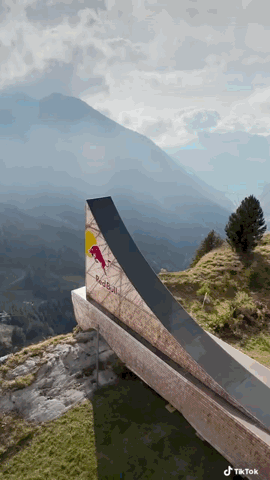How The BMW Museum Takes You On An Upward Winding Tour Of The Many Accomplishments Of World famous Auto Maker.
By YEET MAGAZINE Posted 0833 GMT (1633 HKT) June 28, 2021 Since its reopening in June 2008, the BMW Brand Museum presents its collection in a brand new setting
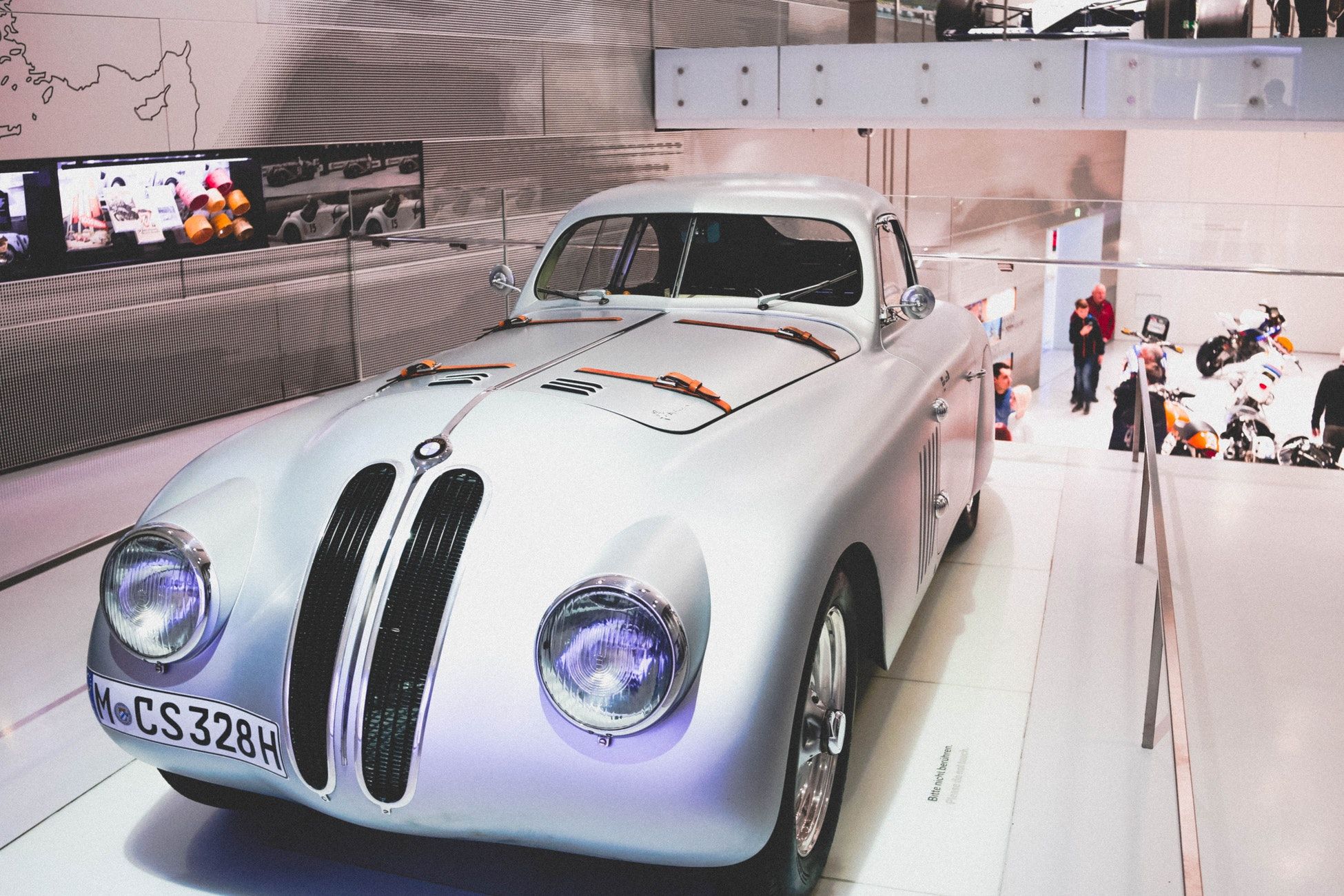
BMW Museum
By YEET MAGAZINE Posted 0833 GMT (1633 HKT) June 28, 2021
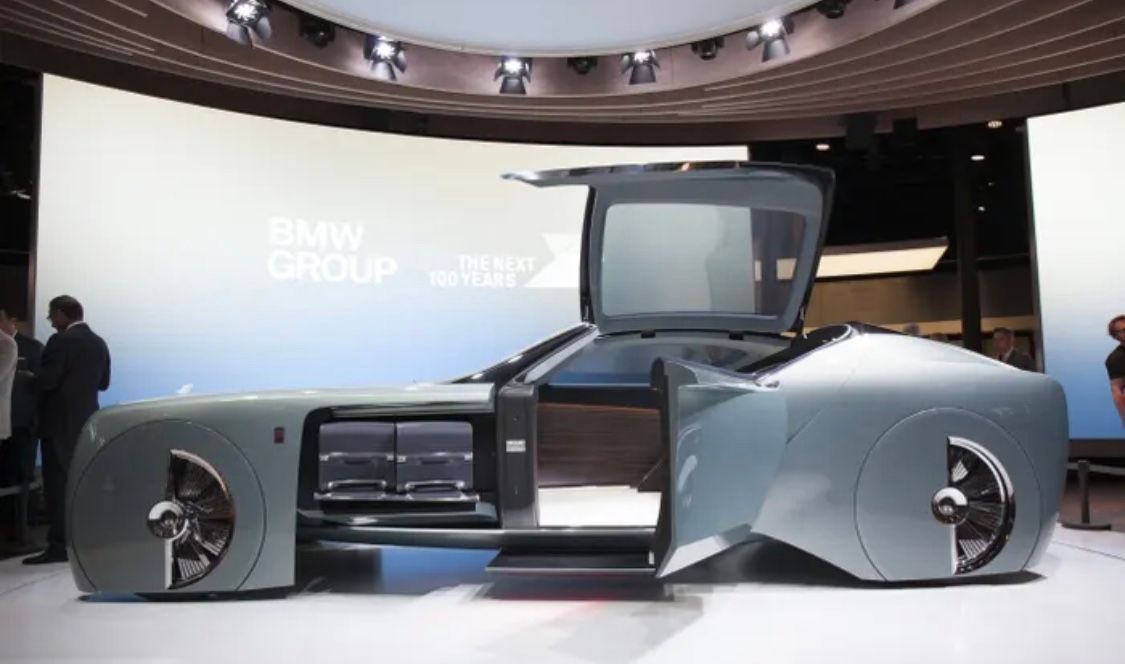
Since its reopening in June 2008, the BMW Brand Museum presents its collection in a brand new setting.
The current complex consists of the old rotunda - the "saucer" from 1973 - and a neighboring building located further south. With a new exhibition area of 5,000m² (compared to just 1,000m² before the renovation), the museum now houses 120 original BMW exhibits.
In the other building, a permanent exhibition takes place and is divided into 25 exhibition areas on the following themes: company history, design, conceptual studies, mechanics, different series, technique and the history of the brand.
In the "saucer" the exhibitions are temporary and complement the different themes in turn.

The creative design takes up the idea of the BMW Museum architect from 1973, Prof. Dr. Karl Schwanzer. His vision of an urban situation in a built and closed space is reinterpreted in an innovative way in the south building.
HISTORY.
Hundreds of thousands of people visit BMW's four-cilinder BMW tower and the bowl-shaped museum next to it each year. The museum showcases the technical development of cars and motorcycles and also has some exhibits about the history of the company. Many old cars and motorcycles are on display along a spiral ramp that curls along the inside of the bowl-shaped building.
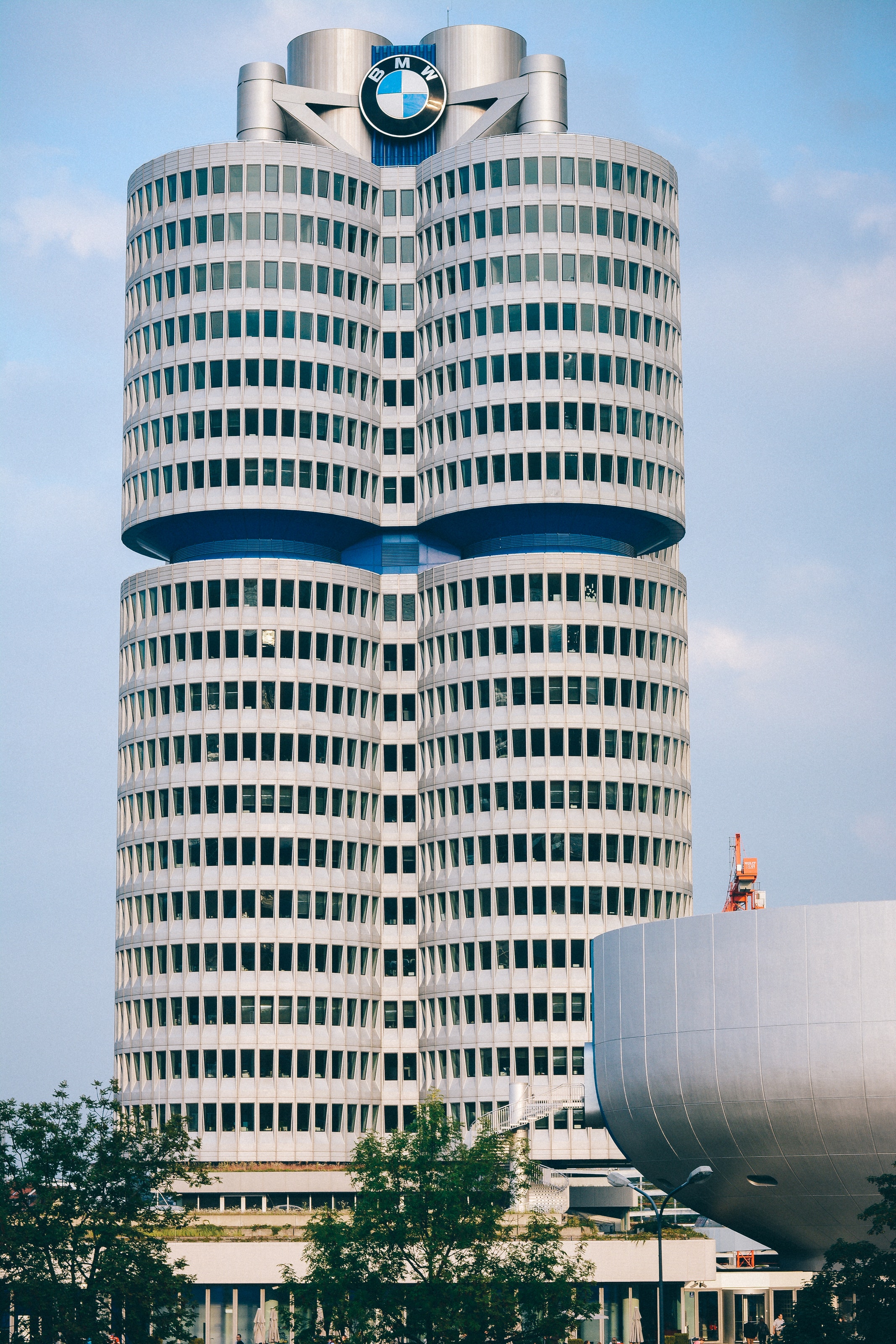
The BMW Museum takes you on an upward winding tour of the many accomplishments of the world famous auto maker. An experience worth the time and effort to swing by Munich if you are ever in the Bavarian area. While at the museum be sure to take the sky walk across to their fabulous show room and accessories store.
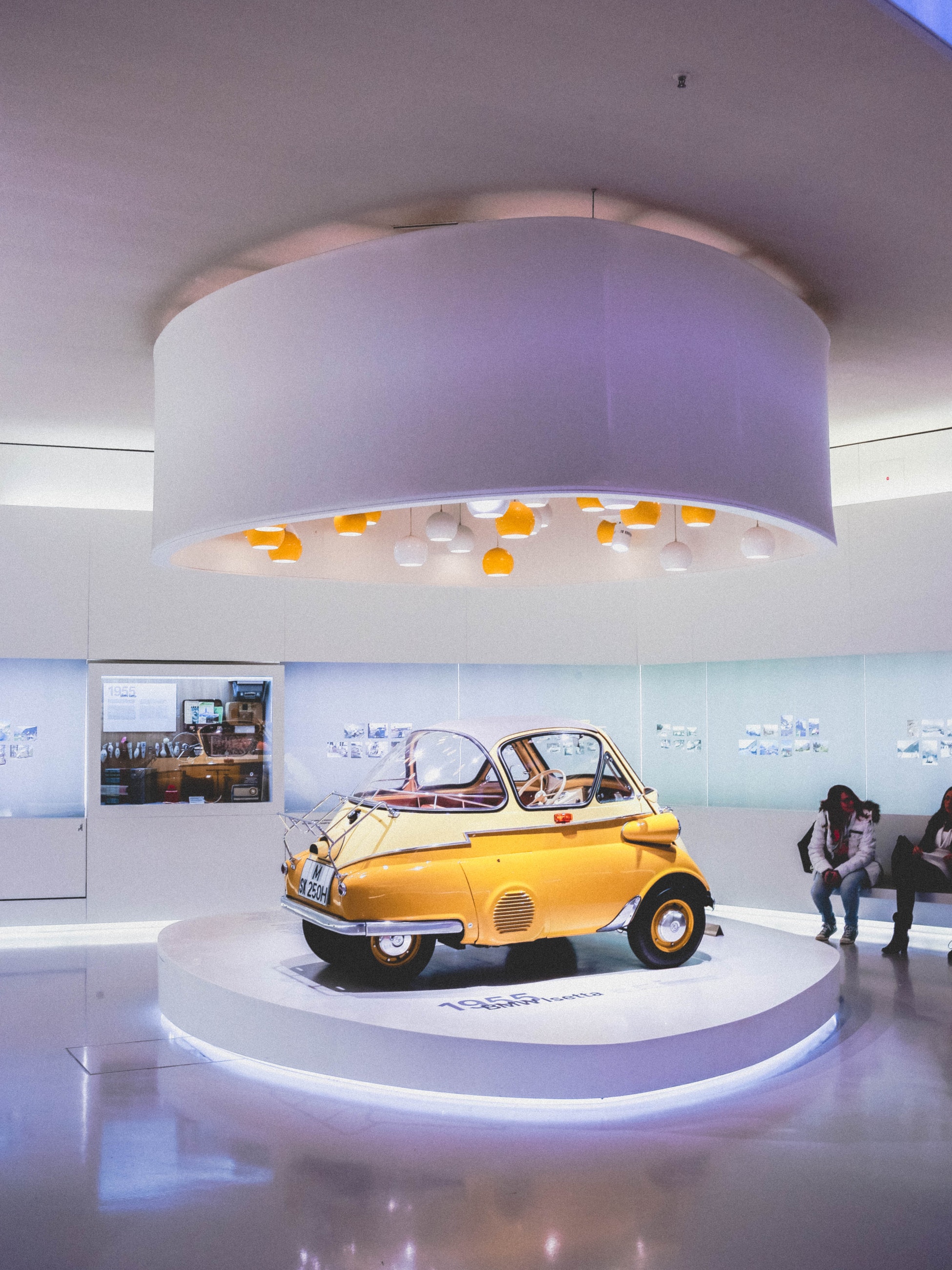
Useful tip:
You can combine this with a visit to BMW Welt and the Olympic Park. A nice day park at the Olympic Park only 5 Euro for the whole day - then you can stroll through the park to BMW. The museum has a huge amount of classic cars and great exhibits, however you may find yourselves confused with the layout and wonder if you'd missed anything. The layout really could be better but it didn't detract too much from the experience. The Mercedes and Porsche Museum layouts in Stuttgart, by comparison are so much better, well worth a visit.
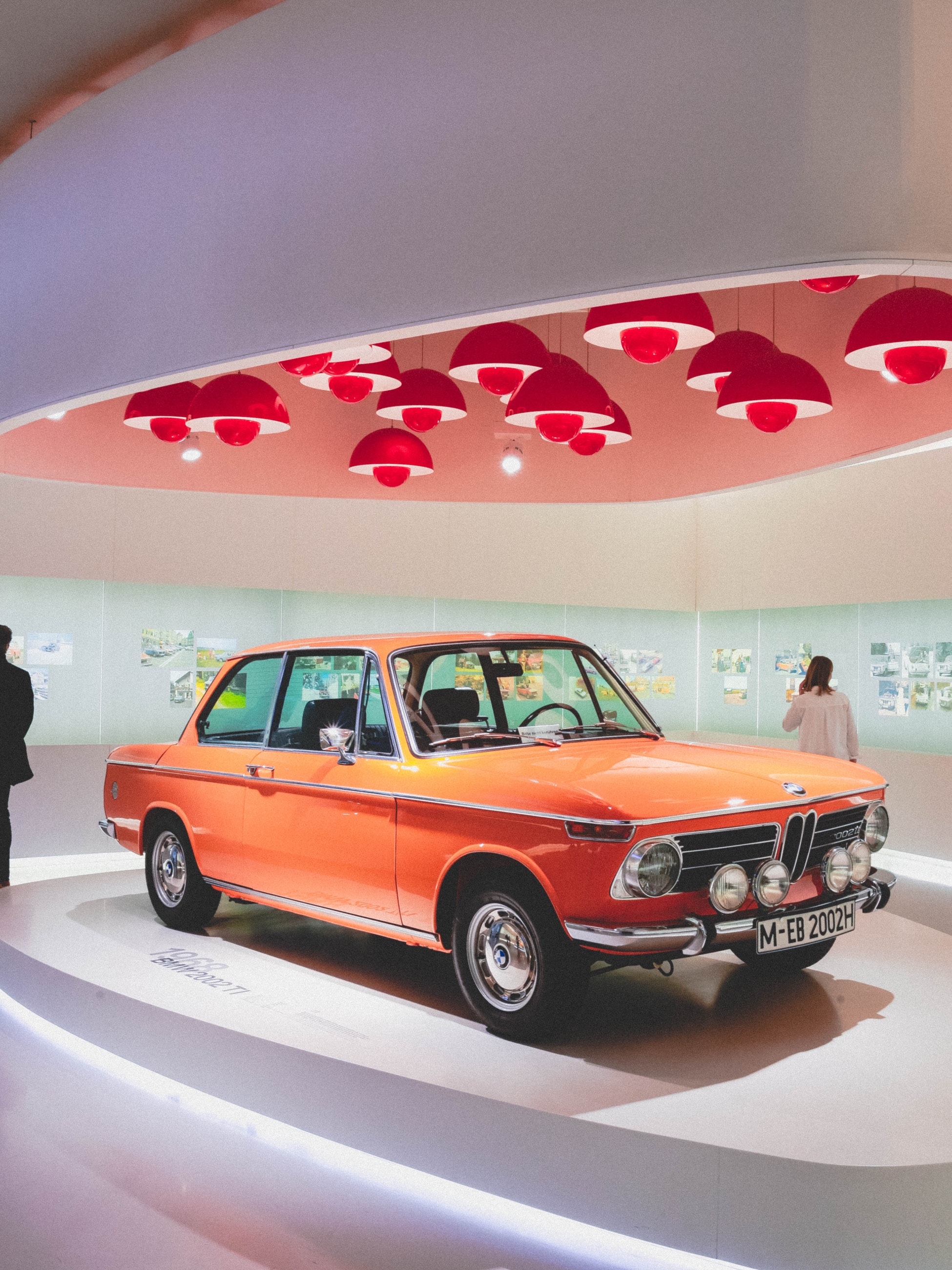
BMW developed an awareness of its history during the very first years of its existence. In as early as 1922, its first products were displayed as not-for-sale souvenirs in a room at the Munich plant. This evolved into the plant museum, which was upgraded with a new historical exhibition in 1966.
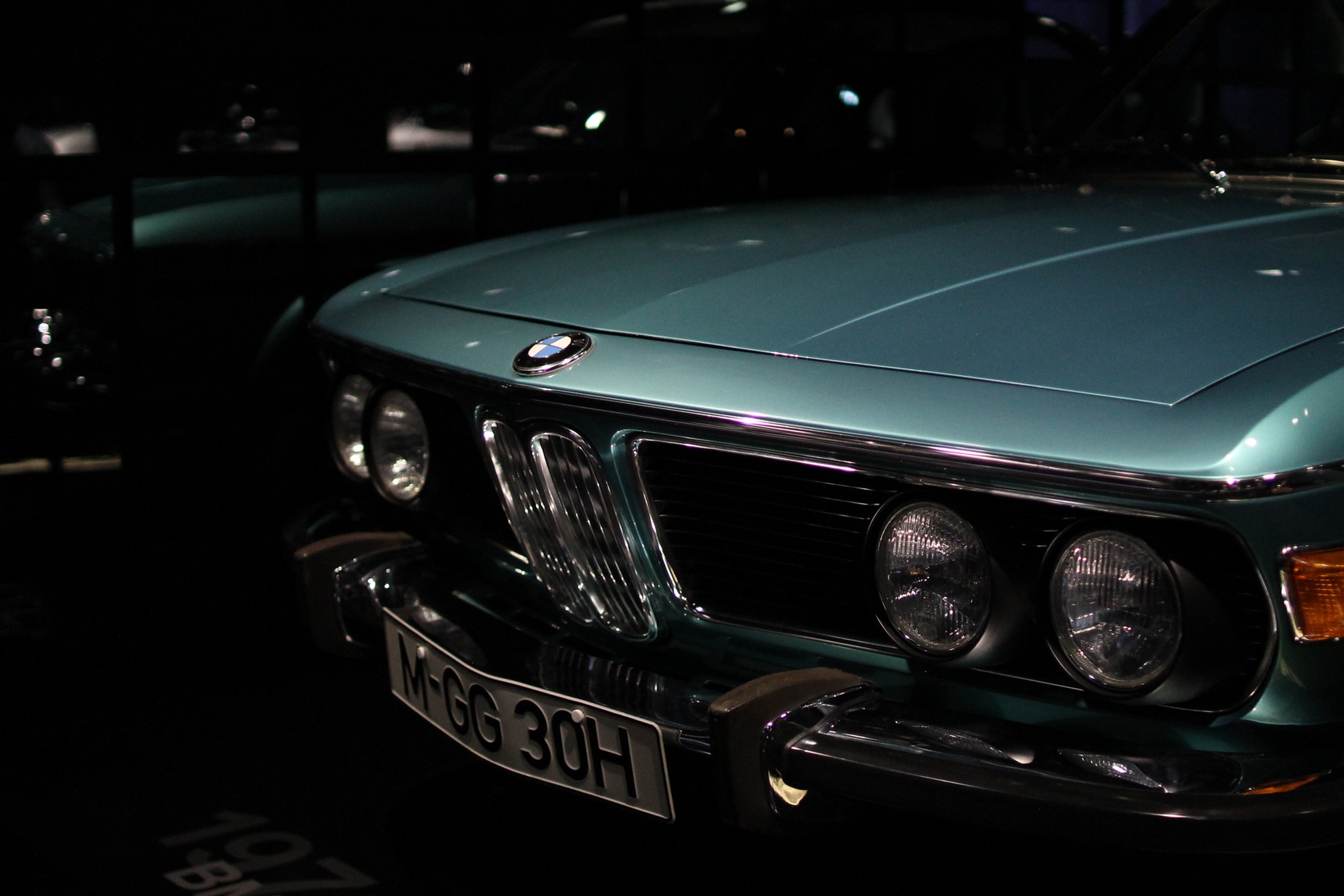
In the late 1960s, the BMW board decided to build a new administration centre, for which the Viennese architect Prof. Karl Schwanzer won the international tender. BMW has him to thank for the forward-looking BMW Tower ensemble, featuring an independent museum building in the form of a silver-grey bowl. The BMW ensemble was officially opened on 18th May 1973.
The exhibition in the new building consisted of a fairly simple display of exhibits, which did not intrude on the characteristic architecture of the museum. Over the years, the increasing number of visitors turned the BMW Museum into one of the most frequented company museums in Germany. It displayed three permanent exhibitions during its first 30 years.
HORIZONS OF TIME.
Zeithorizonte (Horizons of Time), from 1991 to 2004, was also conceived by Rolf Zehetbauer and devoted to major environmental and research topics: which type of progress is possible and which is sustainable? In addition to historic BMW vehicles, the exhibition focused on the 21st century. Among other things, an interactive exhibit presented a futuristic car cockpit equipped with all kinds of electronics.
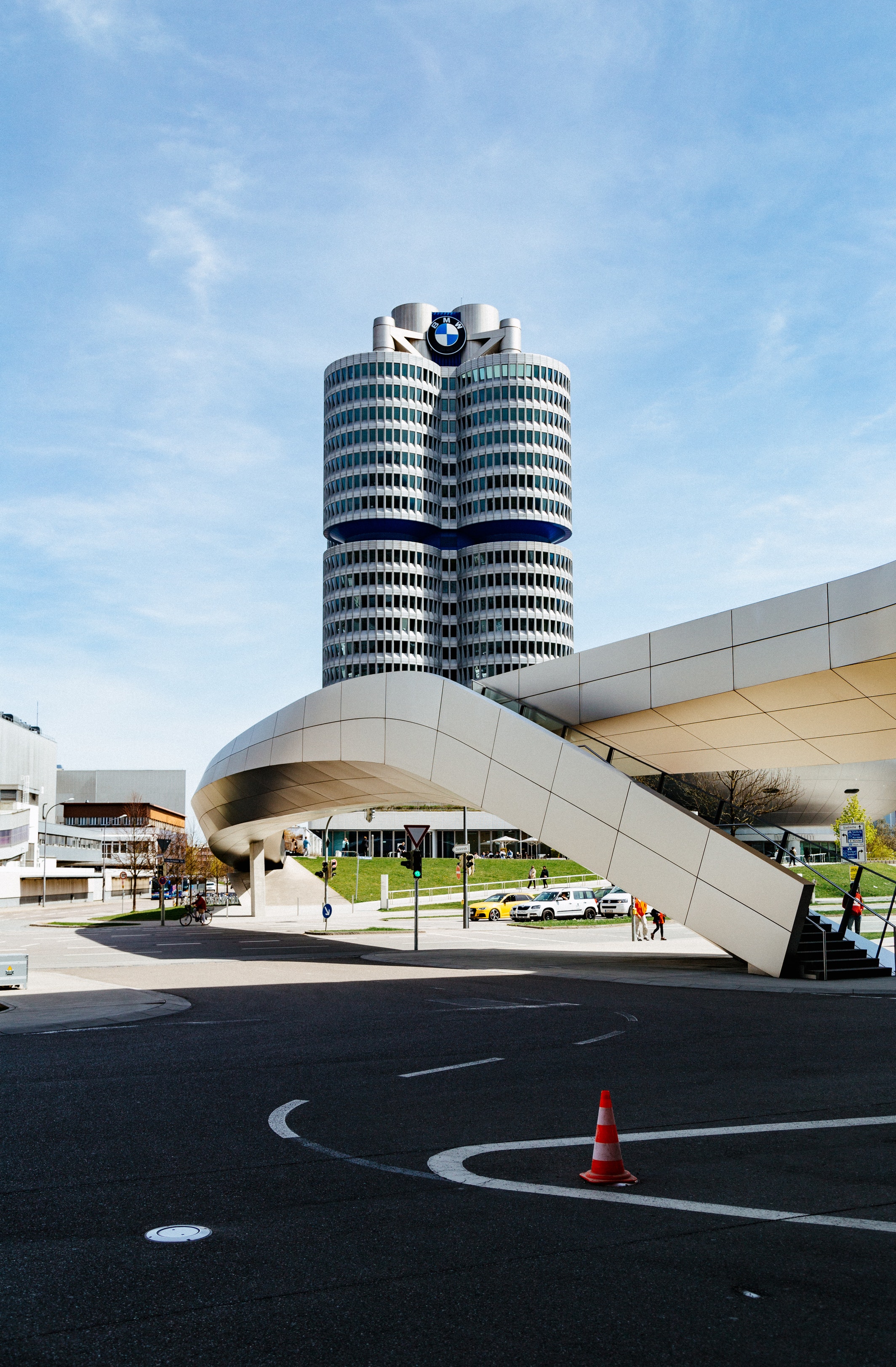
CONCEPT.
The new concept for the BMW Museum was developed out of the success and experience of the previous museum, whereby new emphasis was placed on stressing the importance of the BMW Museum as a brand museum.
Planning began in the spring of 2002, followed by radical redevelopment work in 2004, and culminating in the museum reopening in 2008. BMW commissioned the Stuttgart architects and exhibition designers Atelier Brückner and the Berlin-based ART+COM media designers with the work. The restoration of the building shell and other technical aspects were carried out by ASP Schweger Associates.
In view of the company’s importance as a global player and its extensive range of products, the new design provided for a considerable enlargement of the museum. First of all, the former museum bowl was connected with the neighbouring low-rise building to increase the exhibition space from an original 1,000 square metres to 5,000 square metres, meaning the new museum now boasts sufficient space for the presentation of about 120 exhibits.
The concept referred back to an idea dreamt up by architect Prof. Karl Schwanzer, the creator of the BMW Museum in 1973. He defined the inner structure of the round building as a continuation of the road in an enclosed space. In the adjacent low-rise building, the notion was further developed in a contemporary manner with a modern reinterpretation of his vision of a ‘road in an enclosed space as the principle of dynamic architecture’.
Analogous to the structure in the round building, where platforms were placed like squares along the road, the exhibition areas in the neighbouring low-rise building are organised along a ramp which forms the central visitors’ path. The bowl is reserved for temporary exhibitions, whereas the low-rise building provides space for an extensive theme park, for which its interior was gutted and completely restructured.
Seven exhibition houses have been built in the low-rise building. Each of the houses has been given an individual ‘identity’ developed on the basis of the museum’s themes. This individual appearance creates a context for the exhibits and provides a set of reference points along the route through the museum, measuring approximately 1,000 metres in length. The tour route has been designed with no crossroads and takes the visitor to all 25 exhibition areas.
ARCHITECTURE.
The museum architecture, and exhibition and media design form an ideal setting to present a rich tapestry of themes in a very special way. The BMW Museum takes new approaches by integrating contemporary architecture with the historic buildings, in the same way that the brand is always setting new and innovative benchmarks for engineering and design.
During construction between 2004 and 2008, the museum bowl was restored to its original 1973 state. A central visitors’ ramp in the bowl connected a system of seemingly hovering platforms. The interpretation of the ramp as a road and the exhibition areas as squares became integrated into the neighbouring low-rise building as part of the new museum concept by the architects and exhibition designers at Atelier Brückner.
The exterior façade of this rectangular building was preserved as a ‘historical shell’, while the ceiling structures were removed and the interior was completely gutted. Contemporary architecture was integrated into the newly-created, larger space consisting of a surrounding ramp and seven individual exhibition areas. This glass-and-steel architecture strikes a deliberate contrast to the bowl.
To the outside world, it appears as a massive, self-contained concrete sculpture and its interior is dominated by the character of an open space, whereas the architecture of the low-rise building is more urban in nature. The two building sections, the round and low-rise constructions, are connected via a visitors’ ramp, which leads the guests to all of the 25 exhibition areas.
More car news
CARS
A collection of 4 posts
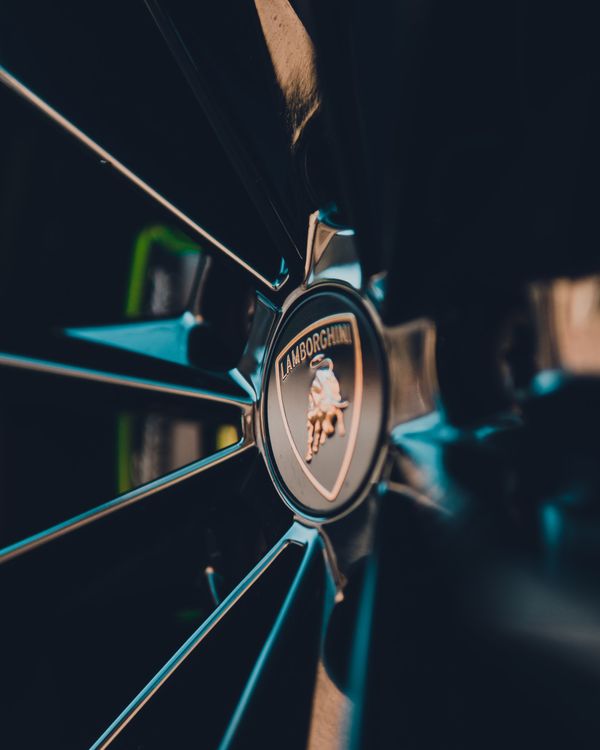
The Motivational Story Behind The Success Of Lamborghini And Why It Was Built For Speed.
By Jenna Norris. One of the most sought out Italian auto brands will be the Lamborghini. This really is a fashionable manufacturer that may be recognized for its output of fine grand tourer cars.
- YEET MAGAZINE

YEET MAGAZINE9 APR 2021 • 2 MIN READ

YEET Cars: Justin Bieber Unveils Futuristic Rolls-Royce Wraith By West Coast Customs Designs.
Back in 2016, rolls-royce unveiled the vision next 100 — a coupé-style concept featuring free-standing wheel uuarches on either side of its classic radiator grille. Upon seeing it, california-based west coast
- YEET MAGAZINE

YEET MAGAZINE12 FEB 2021 • 1 MIN READ
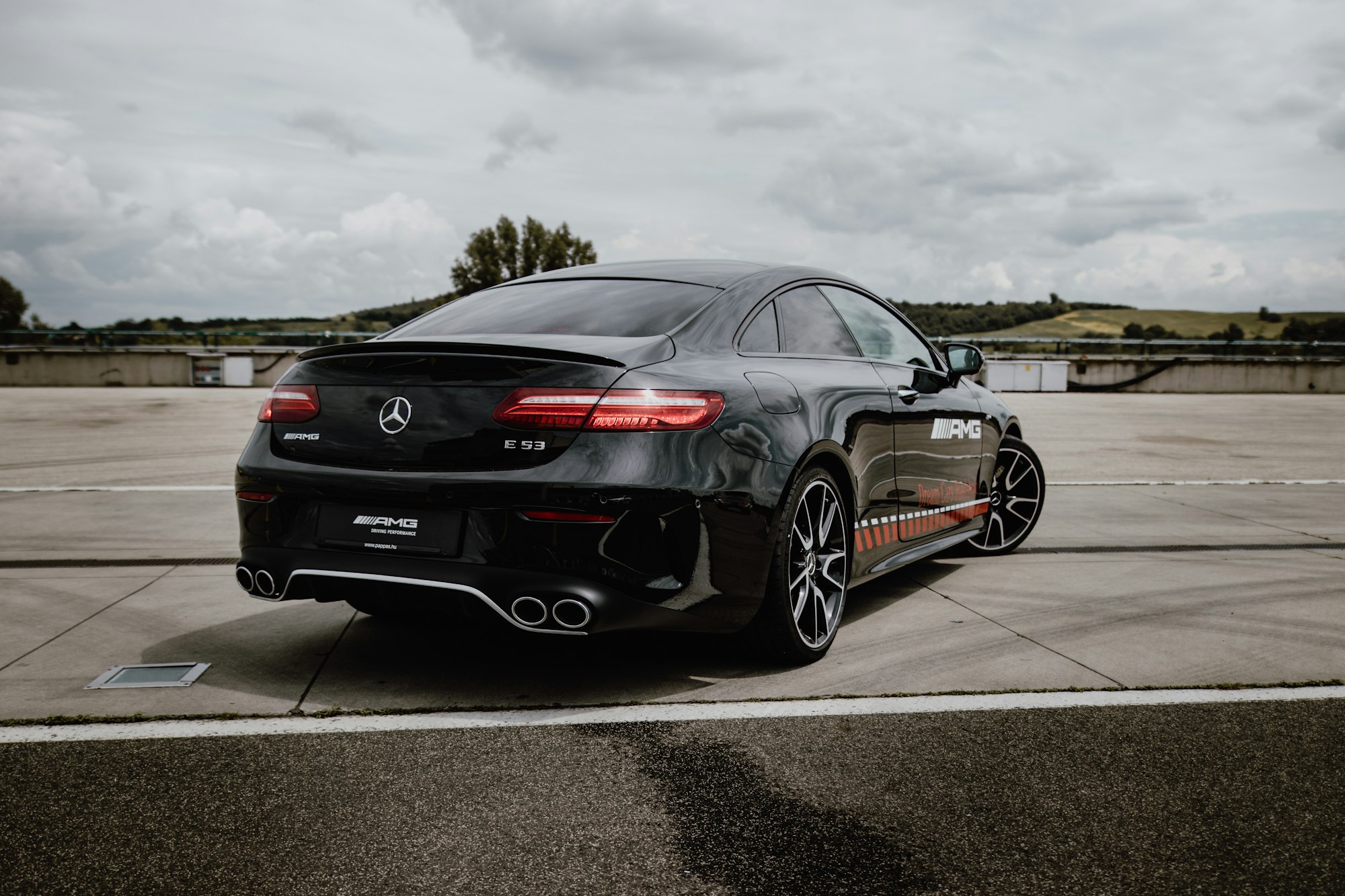
Mercedes-Benz India launches two new service initiatives
CAR NEWS The German carmaker has introduced the ‘Digital Service Drive Next’ and ‘Pay at your convenience’ services in India. 1,224 Views‘Digital Service Drive Next’ allows customers to
- YEET MAGAZINE

YEET MAGAZINE13 JUL 2020 • 2 MIN READ

He flaunted private jets and luxury cars on Instagram. Feds used his posts to link him to alleged cyber crimes
Ramon Abbas flaunted a lavish lifestyle of private jets, designer clothes and luxury cars. To his 2.5 million Instagram followers, he went by Ray Hushpuppi, a man who boarded
- YEET MAGAZINE

YEET MAGAZINE12 JUL 2020 • 4 MIN READ
Results for BMW

Car news·by Danh Bien Nguyen
Automotive technology changed the world auto industry
From the first appearance to the present time, new inventions such as seat belts, airbags, electric balance system, ... have opened up the automotive industry in the world. Incredible progress meets more and more individual needs of users. Here we present 9 car manufacturing technologies that have changed the world auto industry invite you to learn:
1. Seat belt
The first invention in automobile technology was the safety belt that saved the most lives. Although the origin of this seat belt is from an airplane, since it appeared on the P220 Amazon car from 1958 until now has shown that importance is also an indispensable part of every car.
2. Car airbags
Although first fitted in 1973 in the Oldsmobile Toronado. This is a part that helps reduce injuries to people sitting in cars when unfortunately happen situations on the road. Since its inception until now, the department has always been equipped and researched to make it suitable and operate in the most effective way.
3. Diesel engine
Invented in 1883 and equipped with Mercedes-Benz 260 D diesel engine constantly improved by manufacturers and equipped with new features to increase the capacity and performance of the vehicle. Although up to now according to xehoimoi.infoIt is known that diesel engines are outdated and replaced with new engines, but this is one of the automobile manufacturing technologies that has changed the world auto industry.
4. Electronic balance system (ESP)
Like the safety belt for automobile manufacturing technology, the electronic balance system appeared in 1989, which brought the automobile industry new changes. In 1992 Mercedes models began to be equipped with an electronic balance system. Thanks to performance as well as the uses that bring safety to users while driving until 2011, all cars in Europe are required to have ESP.
5.The system helps to automatically emergency braking
Nearly a decade ago, this system was first appeared on volvo cars. The automatic emergency braking system uses an infrared laser camera to help the car brake at speeds below 30km.h to limit collisions. After that step, the system has continuously improved and upgraded by new car manufacturers and now the system can brake at a speed of 200 km / h.
6. Adaptive cruise control
In addition to maintaining stability, the adaptive cruise control can also accelerate and brake according to the oncoming traffic situation. The system works thanks to the use of long-range radar and cameras mounted in the front bumper and on the inner rearview mirror.
7. Automatic driving system
One more automotive manufacturing technology that raised the bar for later car models is the autonomous driving system. This system has been equipped for high-end models such as BMV , Audi, Volvo, ... Not stopping there manufacturers also constantly upgraded like the Audi A8 has been upgraded to the autonomous driving system in Level 3 does not require driver interaction when traveling at 60km. H.
8. Air conditioning system
Officially installed in a car in the world in 1939 when it was still a bulky system with only on and off switches. So far, through the strong development of the automobile manufacturing industry, the air-conditioning system has been improved, so far this system can control the temperature and the air flow to each vehicle position.
9. AWD drive system
The AWD drive system is one of the production technologies that we want to cover in this article. This system was first introduced on the jensen FF in 1966, distributing 37% of the torque to the front axle and 63% to the rear. This is an invention that enables cars to move smoothly through muddy roads.
Above are the automobile manufacturing technologies that have created new strides for the car industry. Hopefully with the information we also provide will help you better understand the car as well as the existing technologies on the vehicle.
Source: https://xehoimoi.info/9-cong-nghe-san-xuat-o-to-lam-thay-doi-nganh-cong-nghiep-o-to-the-gioi/2 views

Comment this content

Car news
Publication by Danh Bien Nguyen
Learn about the history of the famous rolls-royce
Known as the first luxury car company in the world , Rolls-Royce continuously brings models to the eyes of users at a price that is not cheap at all. During the development process from its inception up to now, which models of Rolls-Royce have been there, how have the ups and downs in the history of development? Let's join muaxeotocu.info Take a look at the Rolls-Royce models.
1. The Royce 10HP (built in 1904)
Royce 10HP is known as the first Rolls-Royce car in history and was built in Manchester. This first model was equipped with a 1809 cc two-cylinder engine that drives the rear wheel with a 3-speed manual transmission. Royce 10HP in 1904 was produced with 3 units at that time and currently no longer exists
2. Rolls-Royce 10HP (1904 production)
The first car to carry the Rolls-Royce brand and it was also the first car to be equipped with a Grecian radiator. It was later this radiator that became one of the brand's defining features. There are only q Rolls-Royce 10HP out of 16 that were produced at that time.
3. Rolls-Royce Phantom I (made in 1925)
The Rolls-Royce Phantom I was originally called the New Phantom and it was also the vehicle that marked the birth of the Phantom series. Vehicles equipped with 7668 cc inline cylinders, for a capacity of over 100 horsepower and a maximum speed of more than 129 km / h. With the maximum speed that outperformed the car of time, Rolls-Royce Phantom I quickly attracted the attention of users.
4. Rolls-Royce Silver Wraith (made in 1946)
It can be said that the Silver Wraith is a demonstration and an important milestone in the history of Rolls-Royce production, because this is the first car produced at the company's new Crewe factory. The previous Rolls-Royce cars were built at a facility on the outskirts of Derby.
5. Rolls-Royce Silver Wraith (manufactured in 1949)
Adding a milestone in the history of Rolls-Royce when the Silver Wraith officially opens the concept of cars designed according to the wishes of the car manufacturer. The model has paved the way for a career to develop the individuality and class of a luxury car line for the company later. Rolls-Royce Silver Wraith 1949 is equipped with a 4257 cc inline 6-cylinder engine and 1951 Rolls-Royce Silver Wraith is equipped with a 4566 cc engine block.
6. Rolls-Royce Silver Cloud I (manufactured in 1955)
Designed quite similar to the Bentley Series 1, equipped with a 4887 cc 6-cylinder engine block in line. In the second generation of the Silver Cloud, Rolls-Royce has upgraded its legendary V8 engine.
7. Rolls-Royce Silver Shadow (manufactured in 1965)
Silver Shadow has been designed using the first monocoque chassis in the history of Rolls-Royce cars. In addition, the car is also equipped with an independent self-balancing suspension system, 4-wheel disc brake system and a 6.2-liter V 8 engine block. By 1970 the car was upgraded to a 6.75 liter V8 engine marked a turning point in the history of the company.
8. Rolls-Royce Silver Spirit (produced in 1980)
After a period of time, the company mainly focused on building aircraft engines, nationalized in 1971, by 1980 the automobile production division was transferred to the defense company Vickers. This is also a milestone marking the appearance of the successor Silver Spirit of the Silver Shadow.
9. Rolls-Royce Phantom VI (produced in 2003)
The launch of the Rolls-Royce Phantom VI brings a breath of fresh air to the company when Rolls-Royce is under BMV 's authority . Rolls-Royce Phantom VI is produced at a new factory in the south of England with a huge shape weighing up to 2,500kg, with a luxurious sporty design. Equipped with 6712 cc V12 engine block, for a capacity of 454 horsepower car cars can accelerate from 0-100 km / h in less than 6 seconds.
10. Rolls-Royce Cullinan (produced in 2018)
This is the last face that the news column wants to introduce to you in the Rolls-Royce car models . The Rolls-Royce Cullinan will go on sale next year as a competitor to Bentley Bentleyga, Aston Martin DBX and Lamborghini Urus. This new SUV will cater to those with large financial resources and also mark the first production of an SUV for Rolls-Royce.
With a long history of development and their successes, Rolls-Royce cars are still the desire and dream of many people. With this article categories news hopefully will give you more information about a long line of luxury vehicles in the automotive industry.
The exhibits are presented in seven separate buildings and linked by a 1000m circuit. The exhibitions are not presented chronologically but thematically, which allows each of the seven exhibition buildings to carry an “identity” of its own.
The museum presents the stars of BMW's 90-year history, such as the BMW 328 or 507, the R32 motorcycle or the H2R “record car”.
The BMW Museum in Munich traces the evolution of the brand throughout history. Located next to the BMW Welt , these two places will delight car enthusiasts.

BMW Museum

BMW Museum
Located in a building with a circular shape and metallic color, to simulate the tire of a racing car, the BMW Museum traces the evolution of the brand through history. With over half a million visitors each year, it is one of Munich's most visited museums .
Discover the museum
The museum tells the story of BMW, its technological advances, the evolution of its cars ... It also questions the future.
Its futuristic building has an original entrance, in the form of a spiral, which gives access to exhibitions on vehicles , engines , planes , turbines , motorcycles and many other elements created by the brand.
The visit to the museum can be complemented by a visit to the dealership, where you will discover the latest models of the brand and can visit its factory . You will discover how the dreams of many lovers of this prestigious brand are born.
A paradise for car enthusiasts
Old racing cars, prices, parts and prototypes ... The BMW Museum is not a museum that will appeal to everyone. Car enthusiasts will be delighted!
Right next to the museum, you can visit the BMW Welt and the BMW Factory , also unmissable!
Location
In front of the Olympiapark
Hours
Tuesday to Sunday: 10 a.m. to 6 p.m.
Monday: closed.
Price
Adults: 10 €.
Under 18s, students, people with entry to the Olympic Park Tower: 7€.
Transport
Metro: Olympiazentrum , lines U2 and U3.
Bus: line 173.
Nearby places
BMW factory in Munich (309 m)Olympiaturm (439 m)Olympiapark (713 m)New Pinacoteca (3.1 km)Old Pinacoteca (3.3 km)
Address:
Petuelring 130
80788 München
www.bmw-museum.de (English)
BMW World (English)



